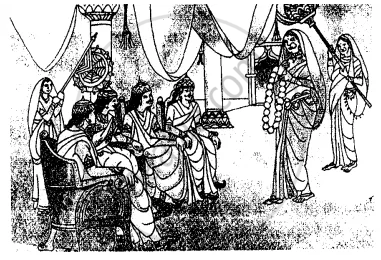Advertisements
Advertisements
प्रश्न
How did the Rajan rule his tribe? What features of the political system show that he was not an absolute ruler?
उत्तर
Rajan was the chief of the tribe. He was the ablest and the strongest man. His duties were to protect people from enemies and looked after their welfare.
The Rajan did not have absolute power because the members of two councils (Samiti and sabha) exercised control over the king. They advised and guided the king. The member of the tribe could give his opinion on important matters. In this way, Rajan did not have absolute power.
APPEARS IN
संबंधित प्रश्न
Textbook Keyword: Grihapati
Textbook Keyword: Varnas
Textbook Keywords: Hereditary
When a king ascended the throne, the purohita performed the ______.
Textbook Keywords: Senani
How did a ‘Samiti’ differ from a ‘Sabha’?
The picture below is an artist’s impression of a ceremony

During which period was this practice prevalent?
The picture below is an artist’s impression of a ceremony

Name the two most important gods worshiped during this period?
The picture below is an artist’s impression of a ceremony

Briefly discuss their religious practices. What part did women play in religious matters?
Name the two highly educated women of the Early Vedic Period?
